20 Minutes With Kim Stelson
Karl M. Phipps, Managing Editor | TLT 20 Minutes October 2014
The director of CCEFP discusses the huge technical and societal benefits to be gained by continued research into fluid power.
KIM STELSON - The Quick File
Kim A. Stelson is director of the NSF-funded Engineering Research Center for Compact and Efficient Fluid Power. Since 1981, he also serves as professor in the department of mechanical engineering at the University of Minnesota. He received his bachelor’s of science degree in mechanical engineering from Stanford University in 1974 and his S.M. and Sc.D. degrees in mechanical engineering from MIT in 1977 and 1982, respectively. Stelson’s fluid power research includes work on hydraulic hybrid vehicles and hydrostatic transmissions for wind power.
Before becoming involved in fluid power research, Stelson was active in research in the modeling and control of manufacturing processes, especially metal forming, polymer processing and composite materials manufacturing. He has been a visiting faculty member at Hong Kong University of Science and Technology, the University of Auckland and the University of Bath. He has previously been director of the Design and Manufacturing Division and director of graduate studies for the M.S. in Manufacturing Systems Program at the University of Minnesota. Stelson has been active with ASME, especially in the Fluid Power Systems and Technology, Dynamic Systems and Control and the Manufacturing Engineering Divisions. He also served as a technical editor of ASME’s
Journal of Manufacturing Science and Engineering and the
Journal of Dynamic Systems, Measurement and Control, which has twice awarded him the Rudolf Kalman Best Paper Award. He is a Fellow of the American Association for the Advancement of Science.
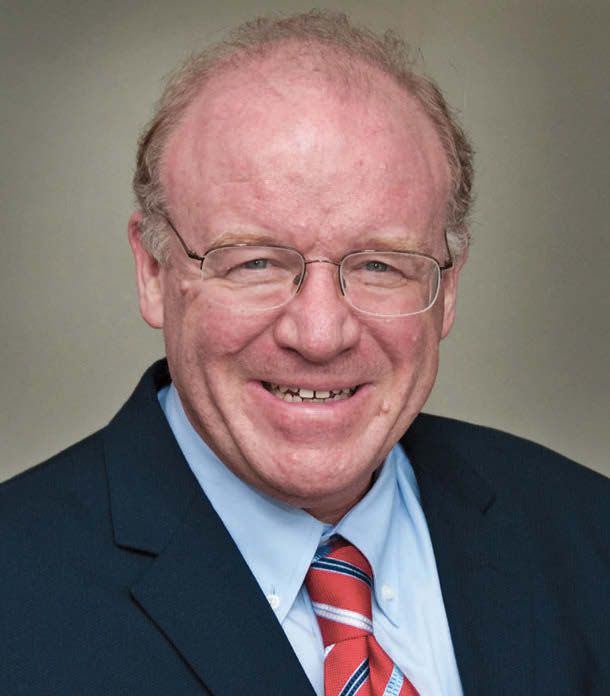 Kim Stelson
Kim Stelson
TLT: How did you become involved in fluid power?
Stelson: I focused on the modeling and control of mechanical systems as a graduate student at MIT. My mentor was professor Henry Paynter, the inventor of the bond graph. Bond graphs provide a unified method to model dynamic systems in multiple energy domains including electrical, mechanical and fluid systems. My doctoral thesis was on a smart-press brake with sensors for closed-loop control of spring-back. Naturally, the actuation system was hydraulic. In the 1950s and ’60s, fluid power research was an active area of research in U.S. universities, with major advances in electro-hydraulic servo controls, primarily for defense and manufacturing applications. When I arrived at MIT in the 1970s, there was research activity in fluid power, but it was dying out.
In the 1980s and ’90s, I focused on the controls challenges of manufacturing in metal forming, injection molding and composite material fabrication. My research was mostly funded by industry, but by the mid-1990s industry was becoming less interested in research and development of manufacturing processes. At the time, the emphasis was on cost reduction and moving production overseas.
During that same period, I first started research collaboration with fluid power companies. I found a much greater interest in research and development than I had found in manufacturing and an industrial community that was enthusiastic about new technology. Also, I found that there was a shortage of fluid power research in U.S. universities and this provided an opportunity for me.
Industry was keenly aware of the shortage of well-trained fluid power engineers in the U.S. Building research and educational activities in fluid power would be the key to filling the need for well-trained engineers. In response to the challenge, the National Fluid Power Association (NFPA) organized a workshop in 2001 that eventually led in 2006 to the National Science Foundation’s support of a new research center for fluid power—the Center for Compact and Efficient Fluid Power (CCEFP).
TLT: What is the CCEFP?
Stelson: The CCEFP is the only major academic fluid power research center in the U.S. and one of the leading fluid power research centers in the world. The CCEFP fills a void in fluid power research that existed for decades. Until the center was established, the U.S. had no major fluid power research center (compared with 30 centers in Europe). Fluid power researchers, who were previously disconnected, are now linked through the CCEFP.
The CCEFP consists of seven universities: Georgia Institute of Technology, University of Illinois at Urbana-Champaign, Milwaukee School of Engineering, University of Minnesota, North Carolina A&T State University, Purdue University and Vanderbilt University. The NSF, university and industry members fund the CCEFP. Our industry members play a central role in determining the strategy, selecting projects, donating equipment and providing valuable technical advice.
TLT: Why is the CCEFP important?
Stelson: The CCEFP is a network of researchers, educators, students and industry working together to transform fluid power by creating hydraulic and pneumatic technology that is compact, efficient and effective. Compactness means decreasing the size and weight of components and systems while maintaining performance. Efficiency means saving energy, thus reducing petroleum consumption and pollution. Effectiveness means creating systems that are clean, quiet, safe and easy to use. We take a systems approach and seek research advances that can radically transform the industry.
Global fluid power component sales approach $60 billion per year. End-application sales are easily an order of magnitude greater since fluid power technology is utilized in a wide range of industries such as construction, manufacturing, transportation, agriculture, packaging and many more. The use of fluid power is so prevalent that improvements in its use, driven by the CCEFP’s research, will have a profound societal impact.
TLT: What are the vision and goals of the CCEFP?
Stelson: The vision of the CCEFP is to transform and fully exploit fluid power into a compact, efficient and effective source of power transmission. The CCEFP’s work in achieving this vision will make transformational societal impacts by reducing polluting petroleum usage and increasing the ways in which fluid power, through human-scale applications, will improve the quality of life, spawning entirely new industries in the process.
The CCEFP’s research goals include doubling fluid power efficiency in current transportation applications and developing new applications in this arena, increasing fluid power efficiency storage density by an order of magnitude and developing new fluid power supplies that are one to two orders of magnitude smaller than anything currently available.
TLT: How does the CCEFP demonstrate or validate the new technologies that are developed?
Stelson: The CCEFP takes a systems approach to research. All approaches must be demonstrated on test beds. The CCEFP has chosen six test beds, as shown in Figure 1. Going from largest to smallest, the six test beds are wind power, excavator, passenger vehicle, patient transfer device, ankle-foot orthosis and precision pneumatics for medical devices. The test beds chosen are mainly mobile applications where, because of its high power-to-weight ratio, fluid power is the best solution. They encompass current and future applications of fluid power, influence neighboring applications and solve important societal problems.
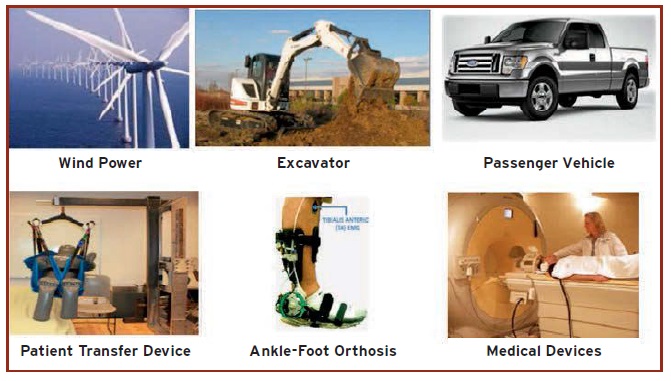 Figure 1. CCEFP research is applied to six different areas.
Figure 1. CCEFP research is applied to six different areas.
A major advantage of fluid power, particularly for mobile applications, is that it has the highest power-to-weight ratio of any power transmission technology. As Figure 2 shows, fluid power applications span six orders of magnitude of power and weight. The CCEFP test beds are plotted as reference. It is important to have applications spanning this entire range to understand the most relevant issues in different applications. The larger test beds are the major energy consumers where efficiency will dominate performance. Efficiency is also important for the small test beds, but compactness plays a dominant role. Effectiveness is important in any test bed that interacts with humans.
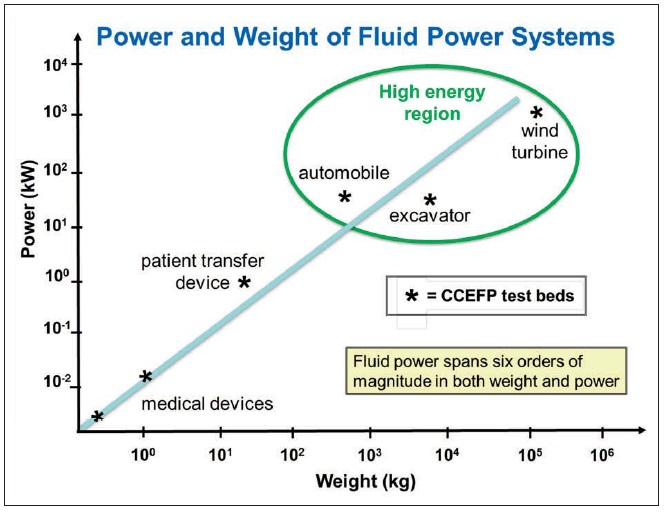 Figure 2.
TLT: How is tribology an enabling technology for fluid power systems?
Figure 2.
TLT: How is tribology an enabling technology for fluid power systems?
Stelson: The performance of hydraulic pumps and motors is affected by the flow in tiny gaps in the machine. The proper sizing of these gaps is important for efficiency. If the gap is too small, friction will lower the mechanical efficiency of the pump or motor. But if the gap is too large, leakage will lower the volumetric efficiency. Overall energy efficiency is the product of mechanical and volumetric efficiency. The gap size that maximizes efficiency represents a tradeoff between these two factors. The optimum gap size and efficiency is a function of the dimensionless group, μω/ρ, where μ is the viscosity, ω is the angular velocity and ρ is the pressure. So as m, w and p change, the efficiency changes accordingly.
Viscosity is a strong function of temperature, so temperature plays an important role in efficiency. High VI fluids can reduce this temperature sensitivity. The fluid is also important for heat transfer since it lowers the temperature of crucial components, enabling the high power density of hydraulics and pneumatics. The actual situation is far more complicated than the explanation presented here, especially in boundary and mixed lubrication where surface topology, chemical reactions and elastic deformations play important roles.
Another area where tribology plays a critical role in fluid power systems is in hydrodynamic bearings, which can carry much larger loads in a smaller package with much longer life than mechanical bearings. Advanced coatings and surface treatments can increase load bearing, extend life and reduce wear.
TLT: From a tribological perspective, what are the most interesting opportunities?
Stelson: In the beginning, the CCEFP had no fluid or additive companies, which is a serious oversight in retrospect. We were contacted by some of the leading hydraulic fluid experts in industry and quickly learned of the importance of fluids in hydraulic system performance. Tailoring the fluid to the application is an important new direction for the fluid power industry, and it has been demonstrated that energy-efficient fluids can lead to significant energy savings in some applications. Hydraulic fluid and additive providers are now among our most active and important industry members.
Upon realizing the importance of fluid power to system performance, we recruited academic researchers to the CCEFP to lead this new research direction. At Georgia Tech, Drs. Richard Salant and Scott Bair have led research on the modeling of reciprocating seals and high-pressure rheology, respectively. Paul Michael at the Milwaukee School of Engineering has done extensive work on the relationship between fluid composition, properties and the performance of hydraulic pumps and motors. Drs. Bill King and Randy Ewoldt at the University of Illinois at Urbana-Champaign have developed nano-texturing techniques that have demonstrated, both theoretically and experimentally, that friction reduction and improved efficiency can be realized with engineered surfaces.
The CCEFP tribology projects to date are just a beginning. Much more is possible. I can envision a future where engineered fluids are tailored to a specific application-optimizing performance. It might be possible to greatly extend the life of hydraulic fluids with new formulations and additives. This might be especially important in wind power applications where fluid replacement is expensive and inconvenient. Self-sealing fluids might automatically seal leaks, and sealed-for-life hydraulics might reduce or eliminate contamination and leakage. Improvements in filtration might extend the life of fluids, and benign fluids might be developed for use in environmentally sensitive ecologies. Engineered fluids could help reduce noise. The list goes on and on.
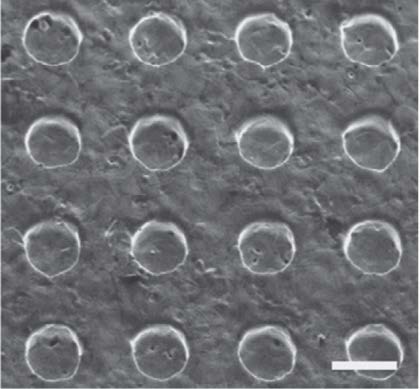 Scanning electron microscope image of microtextured surface. Bar is 100μm.
Scanning electron microscope image of microtextured surface. Bar is 100μm.
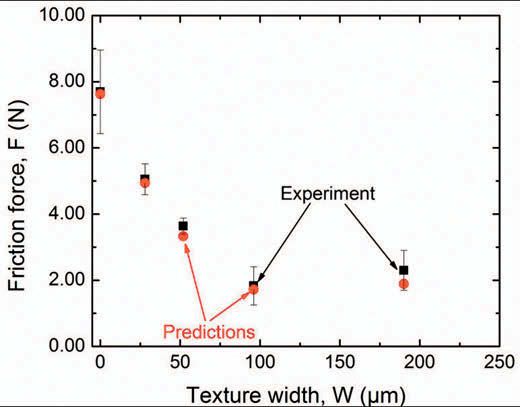 Computational and experimental results, showing friction force as a function of texture width for a constant load application.
Computational and experimental results, showing friction force as a function of texture width for a constant load application.
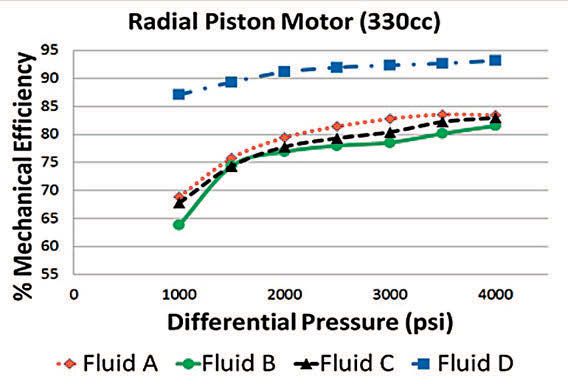 Hydraulic motor performance improvement through the use of engineered fluids and additives.
Hydraulic motor performance improvement through the use of engineered fluids and additives.
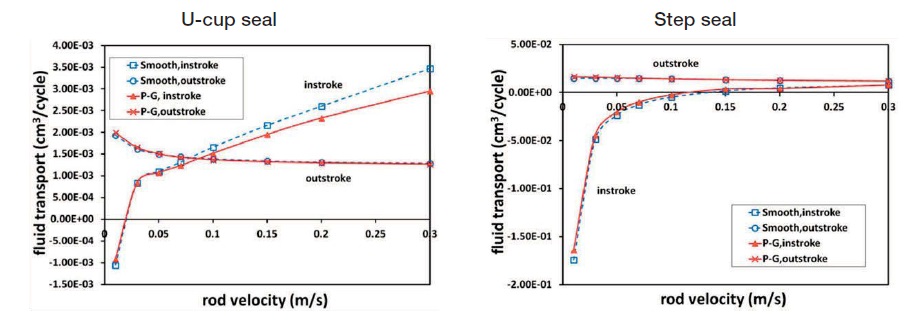 Advanced multimodal seal model that includes mixed boundary lubrication and varying surface roughness
Advanced multimodal seal model that includes mixed boundary lubrication and varying surface roughness.
TLT: Do you think this research will lead to new markets for fluid power equipment and hydraulic fluids?
Stelson: I am convinced that CCEFP research will help open new markets and new opportunities for engineered fluids. Some of our member companies are already selling high-efficiency fluids for existing applications, and there is significant opportunity for improvements in this area. But there are many other possible new markets. We currently have research underway focused on hydrostatic continuously variable transmissions (CVTs) for wind power. Using the inherent power density of hydraulics in new large horsepower applications is very promising. My own research has shown that it is possible to extract 3-4 percent more energy from a mid-size wind turbine through the optimized use of a CVT and accumulator. As another example, Mitsubishi Heavy Industries is aggressively investing in a 7-megawatt hydrostatic CVT wind power project called Sea Angel that utilizes new digital displacement hydraulic technology developed by a start-up company in Scotland, Artemis Intelligent Power.
Our work on a hydraulic hybrid passenger car could completely change the industry. One high-potential research project is the Free Piston Engine Pump (FPEP). A FPEP removes the crankshaft (and much of the lower half of an engine) and replaces it with a pump, making it possible to directly convert the energy from the fuel-air combustion process into hydraulic power, eliminating the mechanical conversion altogether. The net result is the potential for a dramatic increase in fuel economy without any compromise on power. Many other benefits are possible including reduced emissions, multifuel use, instant on-off, etc., that are too numerous to go into great detail here. But from a fluids perspective, just think of the new demands this technology will put on the fluids and the tremendous increase in market size.
On the small end of the power scale, we are investigating human-scale assist and medical devices. The hydraulic ankle-orthosis places huge demands on the fluid for other reasons. With small lines and cavities, the pressure drop due to viscosity dominates the losses. We need new fluids for this application. Although the required fluid volumes are much smaller than a wind turbine, the value added should make this market very attractive to companies that can provide a solution.
TLT: What are the most common misconceptions you hear about fluid power?
Stelson: The misconception that gets under my skin the most is that fluid power is old technology. While it’s true that fluid power has been around since the days of the Roman Empire, I prefer to say that it is under-invested-in technology. When you think about all the research money that’s been dedicated to electric hybrids and batteries over that past decade, the parallel effort for fluid power is just a drop in the bucket. Yet we have proven it is possible to double fuel economy on certain construction equipment, and I believe a 50 percent increase in a pickup truck’s fuel economy is within reach. These are staggering numbers! Just think of what could be achieved if further investments were made.
Other misconceptions I hear about are that hydraulics is noisy, leaky and dirty. These criticisms were true at one time but substantial progress has been made over the past 20 years. More progress is achievable if we put our best minds to the task.
TLT: How will the CCEFP continue its research program after the current NSF grant runs out?
Stelson: During the past eight years, we have built a lot of momentum in U.S. fluid power research with the associated progress on talent pool and lab infrastructure development. Since our inception, we have graduated 121 bachelor’s of science, 97 master’s of science and 51 doctoral students, published nearly 500 papers, helped sponsor 67 industry internships, had 52 invention disclosures, trained more than 8,000 attendees at short courses, workshops and Webinars and exposed more than 70,000 K-12 students to fluid power. But we are definitely approaching a critical juncture regarding the long-term sustainability of the CCEFP.
In 2016, our 10-year NSF grant will run out. It is critical that we come up with other funding sources to take its place. We see the best solution to be a combination of industry consortium funds plus new government-funded research programs. On the industry front, we have entered into a cooperative agreement with the NFPA to form a gifting foundation called the Pascal Society. Industry supporters give an appropriate amount to this foundation based on their company global fluid power sales. These funds will be combined with those from other industry supporters to form a funding pool dedicated precompetitive fluid power research.
To make these funds go further, participating universities have agreed to significantly reduce their indirect rates. The knowledge gained from the research funded by this pool will form the engine that propels the CCEFP forward. It will be crucial to attracting other government grants, which is a second major element of our sustainability plan. Having a large pool of industry supporters will help immensely in this area.
The final major element of our sustainability plan is industry support of independent, company-specified research projects. In summary, all three elements: (1.) industry consortium-sponsored precompetitive research, (2.) government grants and (3.) company-sponsored research are all critical to our long-term sustainability.
You can reach Kim Stelson at kstelson@umn.edu.